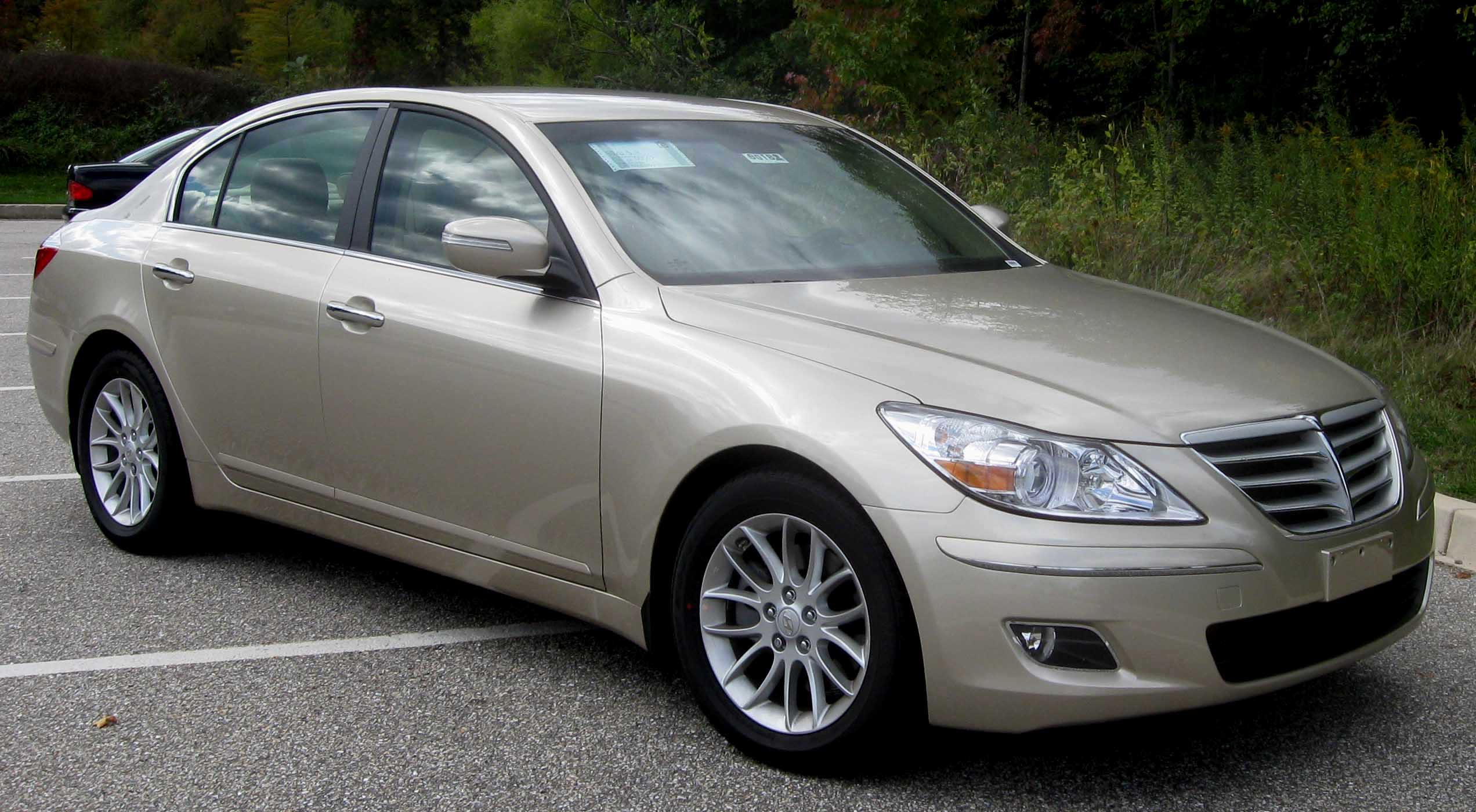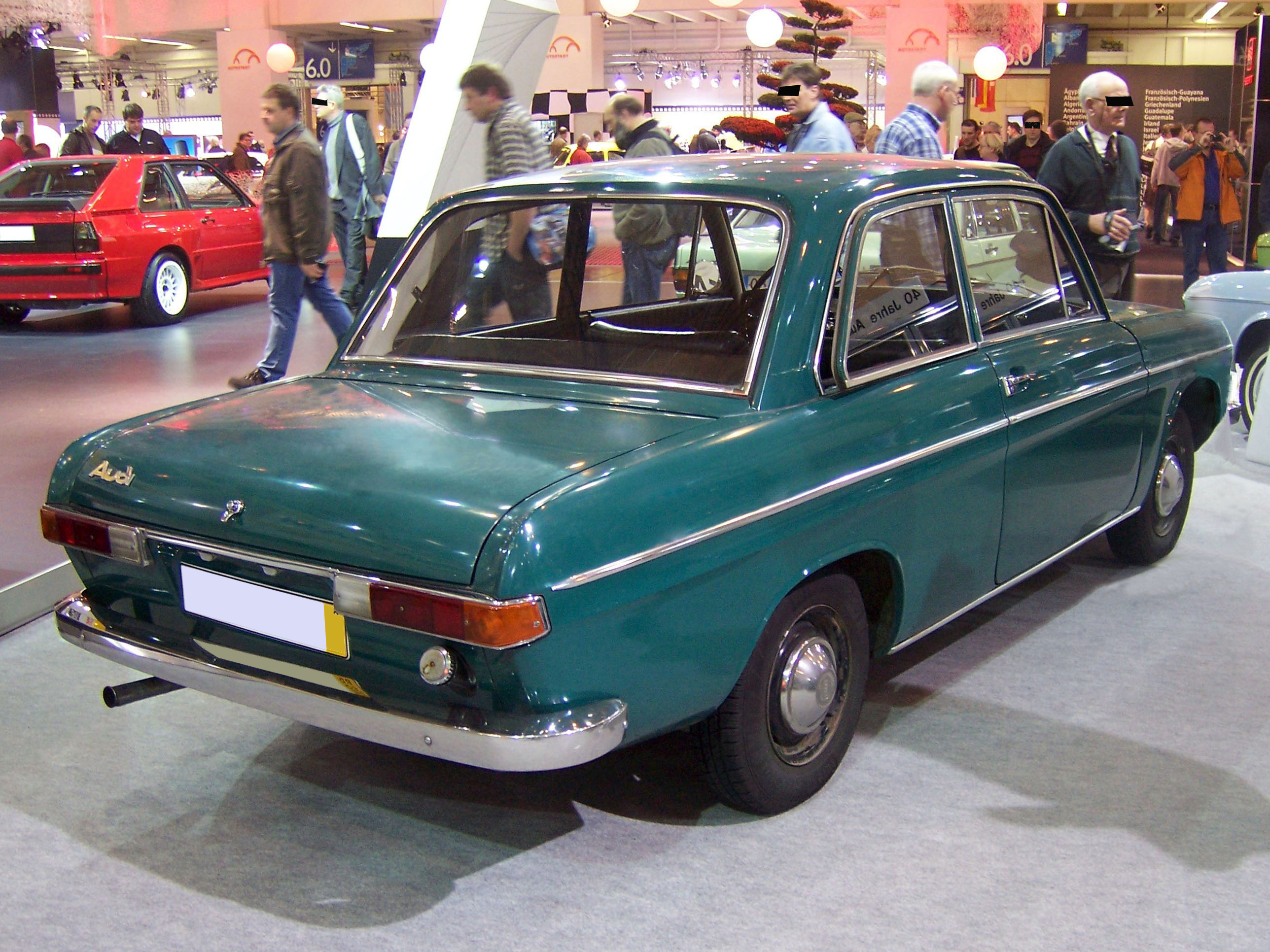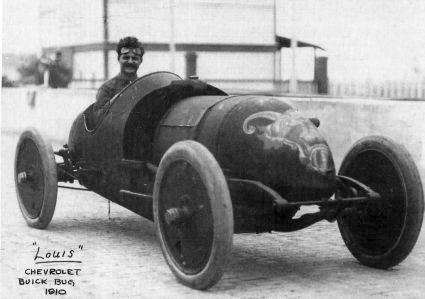|
Audi 920
The Audi 920 is a car introduced in 1938 by the Audi division of Auto Union to replace the Audi Front UW 225. Its engine was a shortened version of the eight-cylinder in-line engine used by sister company Horch. The car was planned to occupy a niche in the Auto Union range between the large Horch products and the middle market cars produced by Wanderer. Audi had no stand-alone production facilities at that time and the car was produced, like its predecessor, at the Horch plant. The 920 featured a front-mounted six-cylinder in-line engine with a displacement of 3,281 cc. A maximum output of at 3,000 rpm was claimed along with a maximum speed of . A floor-mounted lever controlled the four-speed gearbox: this delivered power to the rear wheels, which represented a technological retreat from the innovative front-wheel drive configuration of the 920’s predecessor.Odin, L.C. ''World in Motion 1939 - The whole of the year's automobile production''. Belvedere Publishing ... [...More Info...] [...Related Items...] OR: [Wikipedia] [Google] [Baidu] |
Audi
Audi AG () is a German automotive manufacturer of luxury vehicles headquartered in Ingolstadt, Bavaria, Germany. As a subsidiary of its parent company, the Volkswagen Group, Audi produces vehicles in nine production facilities worldwide. The origins of the company are complex, going back to the early 20th century and the initial enterprises (Horch and the ''Audiwerke'') founded by engineer August Horch (1868–1951); and two other manufacturers (DKW and Wanderer (car), Wanderer), leading to the foundation of Auto Union in 1932. The modern Audi era began in the 1960s, when Auto Union was acquired by Volkswagen from Daimler-Benz. After relaunching the Audi brand with the 1965 introduction of the Audi F103 series, Volkswagen merged Auto Union with NSU Motorenwerke in 1969, thus creating the present-day form of the company. The company name is based on the Latin translation of the surname of the founder, August Horch. , meaning "listen", becomes in Latin. The four rings of the Aud ... [...More Info...] [...Related Items...] OR: [Wikipedia] [Google] [Baidu] |
Straight-six Engine
The straight-six engine (also referred to as an inline-six engine; abbreviated I6 or L6) is a piston engine with six cylinders arranged in a straight line along the crankshaft. A straight-six engine has perfect primary and secondary engine balance, resulting in fewer vibrations than other designs of six or less cylinders. Until the mid-20th century, the straight-six layout was the most common design for engines with six cylinders. However, V6 engines became more common from the 1960s and by the 2000s most straight-six engines had been replaced by V6 engines. An exception to this trend is BMW which has produced automotive straight-six engines from 1933 to the present day. Characteristics In terms of packaging, straight-six engines are almost always narrower than a V6 engine or V8 engine, but longer than straight-four engines, V6s, and most V8s. Straight-six engines are typically produced in displacements ranging from , however engines ranging in size from the Benelli ... [...More Info...] [...Related Items...] OR: [Wikipedia] [Google] [Baidu] |
Cars Introduced In 1938
A car or automobile is a motor vehicle with wheels. Most definitions of ''cars'' say that they run primarily on roads, seat one to eight people, have four wheels, and mainly transport people instead of goods. The year 1886 is regarded as the birth year of the car, when German inventor Carl Benz patented his Benz Patent-Motorwagen. Cars became widely available during the 20th century. One of the first cars affordable by the masses was the 1908 Model T, an American car manufactured by the Ford Motor Company. Cars were rapidly adopted in the US, where they replaced animal-drawn carriages and carts. In Europe and other parts of the world, demand for automobiles did not increase until after World War II. The car is considered an essential part of the developed economy. Cars have controls for driving, parking, passenger comfort, and a variety of lights. Over the decades, additional features and controls have been added to vehicles, making them progressively more complex. These ... [...More Info...] [...Related Items...] OR: [Wikipedia] [Google] [Baidu] |
Rear-wheel-drive Vehicles
Rear-wheel drive (RWD) is a form of engine and transmission layout used in motor vehicles, in which the engine drives the rear wheels only. Until the late 20th century, rear-wheel drive was the most common configuration for cars. Most rear-wheel drive vehicles feature a longitudinally-mounted engine at the front of the car. Layout The most common layout for a rear-wheel drive car is with the engine and transmission at the front of the car, mounted longitudinally. Other layouts of rear-wheel drive cars include front-mid engine, rear-mid engine, and rear-engine. Some manufacturers, such as Alfa Romeo, Lancia, Porsche (944, 924, 928) and Chevrolet (C5, C6, and C7 Corvettes), place the engine at the front of the car and the transmission at the rear of the car, in order to provide a more balanced weight distribution. This configuration is often referred to as a transaxle since the transmission and axle are one unit. History 1890s to 1960s Many of the cars built in the 19t ... [...More Info...] [...Related Items...] OR: [Wikipedia] [Google] [Baidu] |
Executive Cars
Executive car is a British term for a large car which is equivalent to the European E-segment and American full-size classifications. Executive cars are larger than compact executive cars (and the non-luxury equivalent mid-size cars), and smaller than luxury saloons / full-size luxury sedans. The term has also been adopted by Euro NCAP, a European organization founded to test for car safety. Background The term was coined in the 1960s to describe cars targeted at successful professionals and middle-to-senior managers. It was used by businesses as an incentive for employees in senior roles and to exploit Britain and Europe's tax schemes as a company owned vehicle. Early executive cars typically offered engines with displacements of , compared with for an equivalent sized—but less luxurious—"large family car". Prior to the 1990s, executive cars were typically sedans, however in recent years they have also been produced in other body styles, such as estates ( station wago ... [...More Info...] [...Related Items...] OR: [Wikipedia] [Google] [Baidu] |
Audi Vehicles
Audi AG () is a German automotive manufacturer of luxury vehicles headquartered in Ingolstadt, Bavaria, Germany. As a subsidiary of its parent company, the Volkswagen Group, Audi produces vehicles in nine production facilities worldwide. The origins of the company are complex, going back to the early 20th century and the initial enterprises (Horch and the ''Audiwerke'') founded by engineer August Horch (1868–1951); and two other manufacturers ( DKW and Wanderer), leading to the foundation of Auto Union in 1932. The modern Audi era began in the 1960s, when Auto Union was acquired by Volkswagen from Daimler-Benz. After relaunching the Audi brand with the 1965 introduction of the Audi F103 series, Volkswagen merged Auto Union with NSU Motorenwerke in 1969, thus creating the present-day form of the company. The company name is based on the Latin translation of the surname of the founder, August Horch. , meaning "listen", becomes in Latin. The four rings of the Audi logo each rep ... [...More Info...] [...Related Items...] OR: [Wikipedia] [Google] [Baidu] |
Volkswagen
Volkswagen (),English: , . abbreviated as VW (), is a German motor vehicle manufacturer headquartered in Wolfsburg, Lower Saxony, Germany. Founded in 1937 by the German Labour Front under the Nazi Party and revived into a global brand post-World War II by the British Army Officer Ivan Hirst, it is known for the iconic Beetle and serves as the flagship brand of the Volkswagen Group, the largest automotive manufacturer by worldwide sales in 2016 and 2017. The group's biggest market is in China, which delivers 40 percent of its sales and profits. Its name is derived from the German-language terms and , translating to "people's car" when combined. History 1932–1940: People's Car project Volkswagen was established in 1937 by the German Labour Front (''Deutsche Arbeitsfront'') in Berlin. In the early 1930s, cars were a luxury – most Germans could afford nothing more elaborate than a motorcycle and only one German out of 50 owned a car. Seeking a potential new market, s ... [...More Info...] [...Related Items...] OR: [Wikipedia] [Google] [Baidu] |
1965
Events January–February * January 14 – The Prime Minister of Northern Ireland and the Taoiseach of the Republic of Ireland meet for the first time in 43 years. * January 20 ** Lyndon B. Johnson is Second inauguration of Lyndon B. Johnson, sworn in for a full term as President of the United States. ** Indonesian President Sukarno announces the withdrawal of the Indonesian government from the United Nations. * January 30 – The Death and state funeral of Winston Churchill, state funeral of Sir Winston Churchill takes place in London with the largest assembly of dignitaries in the world until the 2005 funeral of Pope John Paul II. * February 4 – Trofim Lysenko is removed from his post as director of the Institute of Genetics at the Russian Academy of Sciences, Academy of Sciences in the Soviet Union. Lysenkoism, Lysenkoist theories are now treated as pseudoscience. * February 12 ** The African and Malagasy Republic, Malagasy Common Organization ('; OCA ... [...More Info...] [...Related Items...] OR: [Wikipedia] [Google] [Baidu] |
Audi F103
F103 is the internal designation for a series of car models produced by Auto Union GmbH (after merger with NSU Motorenwerke in 1969: Audi NSU Auto Union) in West Germany from 1965 to 1972, derived from the earlier DKW F102. To signify the change from a two-stroke to four-stroke engine, the DKW marque was dropped in favour of Audi, a name that had been dormant since before the Second World War. Models The first model was launched simply as the Audi, later being renamed the Audi 72 (72 being the nominal power output of the engine in '' PS''). The more powerful Audi 80 and Audi Super 90 sports saloons (with 80 and 90 PS respectively) appeared in 1966: in 1968 the arrival of the less powerful Audi 60 completed the range. Breaking somewhat with the naming pattern, the Audi 60 has , although export versions produce . The Audi 75 replaced both the Audi 72 and the Audi 80 from 1969 onwards. In 1972 the F103 series was discontinued in favour of the "B1" Audi 80. Engines The F10 ... [...More Info...] [...Related Items...] OR: [Wikipedia] [Google] [Baidu] |
Second World War
World War II or the Second World War, often abbreviated as WWII or WW2, was a world war that lasted from 1939 to 1945. It involved the World War II by country, vast majority of the world's countries—including all of the great powers—forming two opposing military alliances: the Allies of World War II, Allies and the Axis powers. World War II was a total war that directly involved more than 100 million Military personnel, personnel from more than 30 countries. The major participants in the war threw their entire economic, industrial, and scientific capabilities behind the war effort, blurring the distinction between civilian and military resources. Air warfare of World War II, Aircraft played a major role in the conflict, enabling the strategic bombing of population centres and deploying the Atomic bombings of Hiroshima and Nagasaki, only two nuclear weapons ever used in war. World War II was by far the List of wars by death toll, deadliest conflict in hu ... [...More Info...] [...Related Items...] OR: [Wikipedia] [Google] [Baidu] |
Buick
Buick () is a division of the American automobile manufacturer General Motors (GM). Started by automotive pioneer David Dunbar Buick in 1899, it was among the first American marques of automobiles, and was the company that established General Motors in 1908. Before the establishment of General Motors, GM founder William C. Durant had served as Buick's general manager and major investor. In the North American market, Buick is a premium automobile brand, selling luxury vehicles positioned above GM's mainstream brands, while priced below the flagship luxury Cadillac division. Buick's current target demographic according to '' The Detroit News'' is "a successful executive with family." After securing its market position in the late 1930s, when junior companion brand Marquette and Cadillac junior brand LaSalle were discontinued, Buick was positioned as an upscale luxury car below the Cadillac. During this same time period, many manufacturers were introducing V8 engines in their ... [...More Info...] [...Related Items...] OR: [Wikipedia] [Google] [Baidu] |
Austin 16 Hp
The Austin Sixteen (also Austin 16) is a 2.2-litre motor car that was built by Austin from 1945 until 1949. It was the first 'new' car to be produced by Austin following the end of the Second World War. Apart from the name, it shared nothing with the pre war Austin 16. Whilst it used a brand new 4-cylinder 2199 cc, overhead-valve engine—the first to be used in an Austin car, it in fact used the chassis and body of the pre-war Austin 12, which continued to be produced, alongside the other pre-war saloons the 8 hp and the 10 hp. The number Sixteen was not an indication of the actual power output of the engine but rather the result of a calculation used to determine the excise duty (road tax) payable for the vehicle. The engine in fact produced at 3800 rpm. The car shared a number of features with the famed London Taxi, one of which was the built-in hydraulic jacking system operated from a pump located under the bonnet. The Sixteen had a healthy turn of ... [...More Info...] [...Related Items...] OR: [Wikipedia] [Google] [Baidu] |
.jpg)







